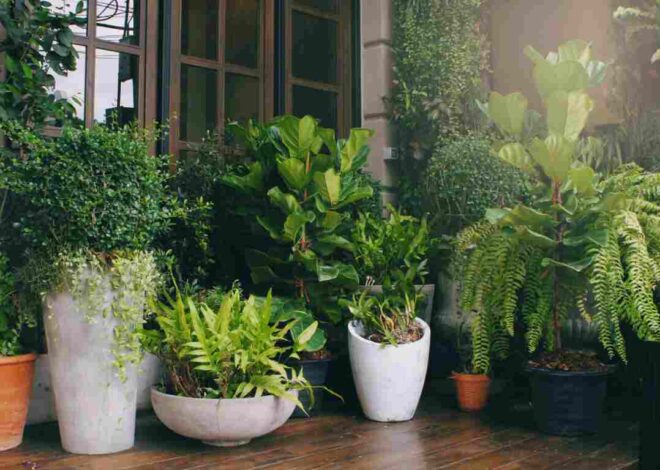
Tips for Growing a Beautiful Rose Garden
Roses are a beloved and iconic flower, known for their stunning beauty, captivating fragrance, and the ability to bring a touch of elegance to any garden. Whether you’re a seasoned gardener or a beginner, growing a thriving rose garden can be a rewarding and enjoyable experience. In this comprehensive guide, we’ll provide you with valuable tips and insights to help you cultivate a stunning rose garden that will be the envy of your neighborhood.
Choosing the Right Roses
The first step in creating a beautiful rose garden is selecting the right rose varieties for your garden. This is a crucial decision, as different rose types have unique requirements and characteristics that need to be considered. When choosing roses, it’s important to take into account factors such as your local climate and hardiness zone, the type of soil in your garden, the amount of sunlight the area receives, and your personal preferences when it comes to color and fragrance.
Climate and Hardiness Zone
One of the most important factors to consider when selecting roses is your local climate and hardiness zone. Roses have varying levels of cold and heat tolerance, and it’s essential to choose varieties that are well-suited to the conditions in your area. For example, if you live in a colder region, you’ll want to opt for hardy, winter-resistant rose varieties that can withstand frost and snow. Conversely, if you reside in a warmer climate, you’ll need to select roses that can thrive in hot, humid conditions.
Soil Type and pH
The type of soil in your garden and its pH level can also have a significant impact on the success of your rose-growing efforts. Roses prefer well-draining, nutrient-rich soil with a slightly acidic pH, typically between 6.0 and 6.5. If your soil is too alkaline or too acidic, you may need to amend it with appropriate additives to create the ideal growing conditions for your roses.
Sunlight and Shade Requirements
Roses have varying sunlight requirements, with most varieties needing at least six hours of direct sunlight per day to thrive. When selecting your roses, consider the amount of sunlight your garden receives and choose varieties that are well-suited to the available light conditions.
Color and Fragrance Preferences
Finally, don’t forget to consider your personal preferences when it comes to the color and fragrance of your roses. Roses come in a vast array of hues, from classic red and pink to vibrant yellow, deep purple, and even bi-colored varieties. Similarly, some roses are known for their intense, captivating fragrance, while others have a more subtle scent. Choosing roses that align with your aesthetic preferences will help you create a garden that truly reflects your personal style.
Soil Preparation
Proper soil preparation is crucial for the success of your rose garden. Roses are heavy feeders and require nutrient-rich, well-draining soil to thrive. Before planting, take the time to test your soil’s pH level and make any necessary adjustments to ensure it falls within the ideal range for rose cultivation.
Testing the pH Level
Using a soil test kit, determine the pH level of your garden soil. Roses prefer a slightly acidic soil, with a pH between 6.0 and 6.5. If your soil is too alkaline, you can lower the pH by adding sulfur or other acidifying amendments. Conversely, if your soil is too acidic, you can raise the pH by incorporating lime or other alkaline materials.
Adding Organic Matter
Incorporate generous amounts of organic matter, such as compost or well-rotted manure, into your soil. This will not only improve the soil’s nutrient content but also enhance its drainage and water-holding capacity, creating the ideal growing medium for your roses.
Removing Weeds and Debris
Before planting, be sure to remove any existing weeds, debris, or other materials that could compete with your roses for nutrients and water. A clean, well-prepared planting area will give your roses the best chance of establishing a strong, healthy root system.
Maintaining Healthy Soil
Ongoing soil maintenance is essential for the long-term health of your rose garden. Regularly apply a layer of organic mulch around the base of your plants to retain moisture, suppress weed growth, and gradually release nutrients into the soil. Additionally, be mindful of your watering and fertilization practices, as over-watering or over-fertilizing can lead to problems such as nutrient imbalances or disease.
Planting and Care
Once you’ve selected the right roses and prepared your soil, it’s time to plant and care for your new additions.
Planting Techniques
When planting your roses, dig a hole that is twice the width of the root ball and just slightly deeper. Gently place the plant in the hole, ensuring that the bud union (the swollen area at the base of the plant) is planted 2-3 inches below the soil surface. Backfill the hole with the original soil, taking care not to pack it too tightly, and water thoroughly to settle the soil around the roots.
Pruning and Deadheading
Proper pruning and deadheading are essential for maintaining the health and appearance of your rose garden. Prune your roses in early spring, removing any dead, damaged, or crossing canes, and shape the plant to encourage new growth. Throughout the growing season, deadhead spent blooms to promote the formation of additional flowers.
Fertilizing and Pest Control
Roses are heavy feeders and will benefit from regular applications of a balanced, rose-specific fertilizer. Follow the manufacturer’s instructions carefully, and avoid over-fertilizing, as this can lead to excessive foliage growth at the expense of blooms. Additionally, keep an eye out for common rose pests and diseases, and address any issues promptly with organic or eco-friendly control methods.
Mulching and Watering
Applying a 2-3 inch layer of organic mulch around the base of your rose plants will help retain soil moisture, suppress weeds, and insulate the roots from extreme temperature fluctuations. When it comes to watering, aim to provide your roses with approximately 1-2 inches of water per week, either through rainfall or supplemental irrigation.
Common Challenges and Solutions
As with any type of gardening, growing roses can present its fair share of challenges. However, with the right knowledge and approach, you can overcome these obstacles and enjoy a thriving rose garden.
Pests and Diseases
Rose gardeners may encounter a variety of pests and diseases, including aphids, Japanese beetles, black spot, and powdery mildew. To combat these issues, consider using organic pest control methods, such as introducing beneficial insects or applying neem oil or insecticidal soap. Additionally, practice good garden hygiene by regularly removing any infected or damaged foliage to prevent the spread of disease.
Soil Issues
If your roses are struggling due to poor soil conditions, such as heavy clay or sandy soil, you can amend the soil by incorporating organic matter or adjusting the pH level. Additionally, ensure that your roses are receiving the appropriate amount of water and nutrients to maintain optimal soil health.
Weather Conditions
Extreme weather events, such as prolonged drought, heavy rain, or sudden temperature changes, can pose challenges for rose gardeners. To mitigate the impact of these conditions, consider using mulch to retain soil moisture, providing shade or wind protection, and adjusting your watering and fertilization practices as needed.
Conclusion
Growing a beautiful rose garden requires a combination of careful planning, proper preparation, and attentive care. By following the tips and techniques outlined in this guide, you’ll be well on your way to cultivating a stunning and thriving rose garden that will bring joy and beauty to your outdoor space. So, what are you waiting for? Start planning your dream rose garden today!


